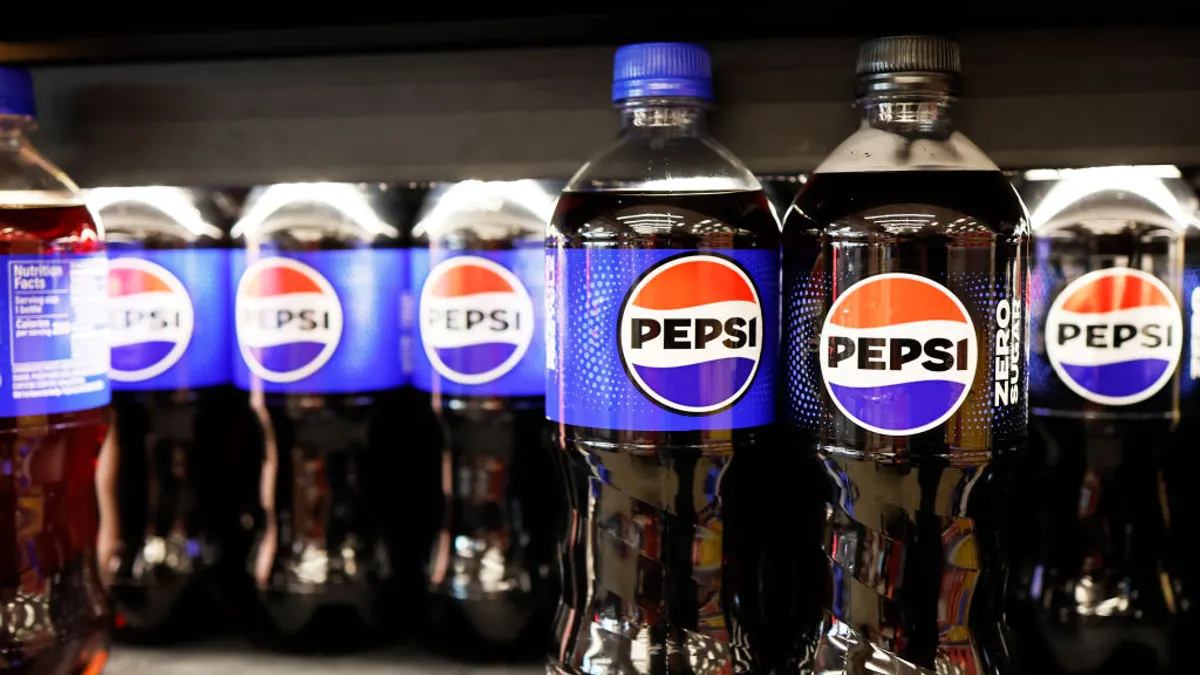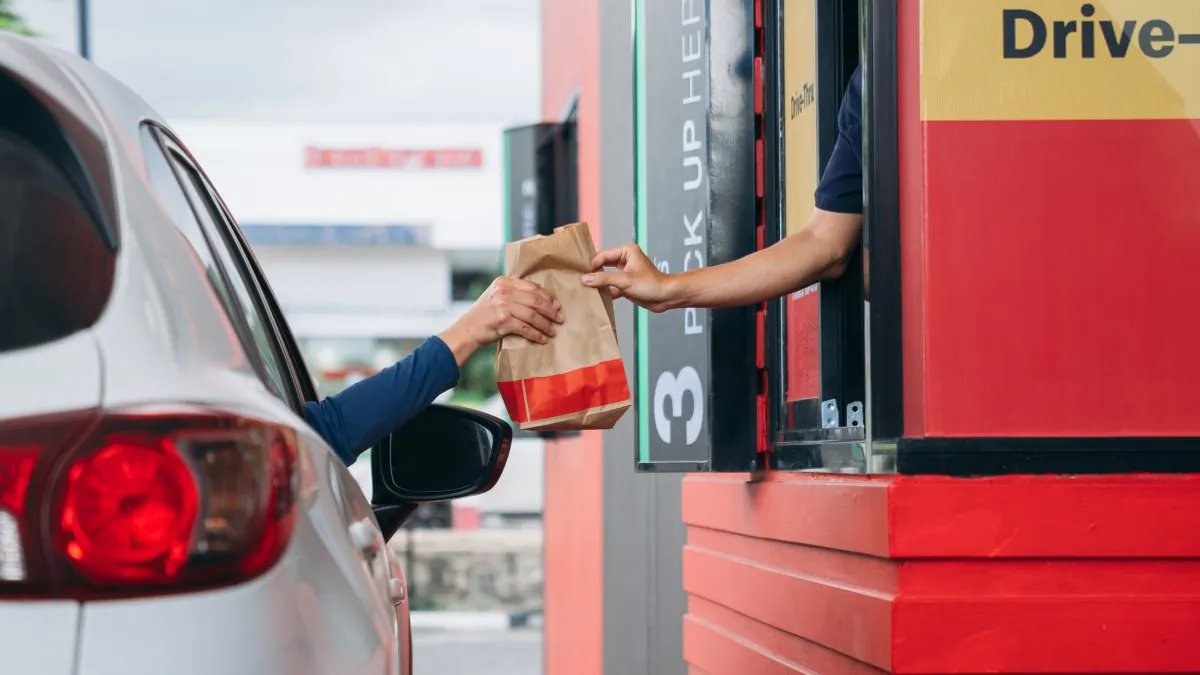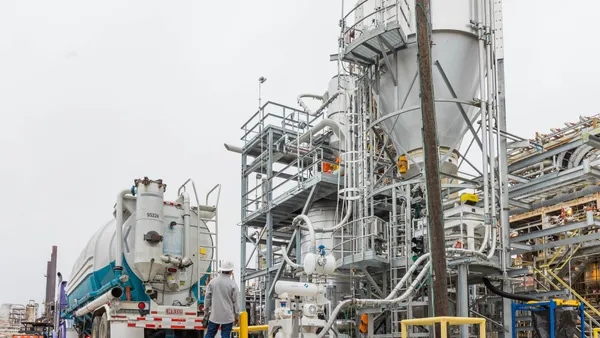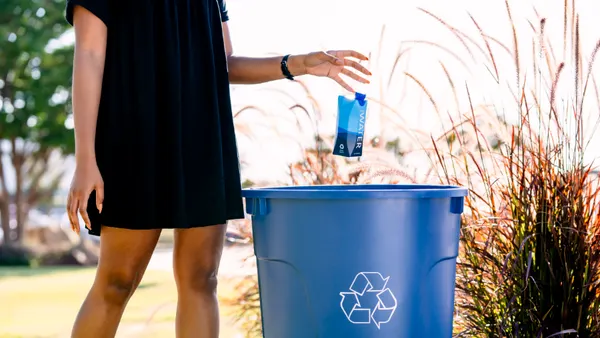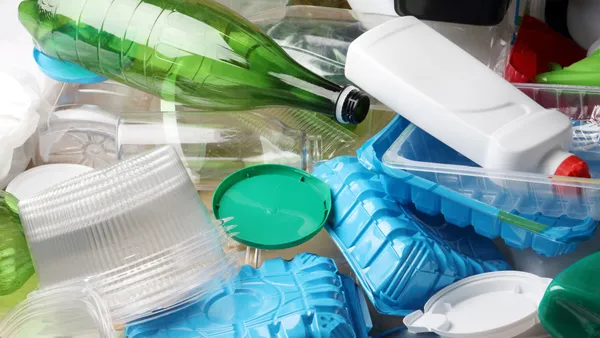PepsiCo announced Thursday it has reworked its sustainable packaging targets, along with other sustainability goals across the business. The company decided to cancel its reuse targets, among other changes.
The company launched its PepsiCo Positive (pep+) sustainability strategy nearly four years ago, in September 2021. While noting progress toward the goals since implementation, the company also says the revamp accounts for “external realities” that drag down advancement.
“Our goals must evolve with us to keep our ambition and to deliver on our long-term vision,” PepsiCo CEO Ramon Laguarta said in a statement.
These are some of the goals that have changed:
- Reusable packaging: PepsiCo is sunsetting its packaging reuse target. Previously, it aimed to scale new reuse models, striving to deliver 20% of all beverage servings sold via reusable models by 2030. The company now says it will simply continue to track reusability in its reusable, recyclable or compostable packaging goal.
- Virgin plastic reduction: It discontinued the goal of trying to reduce absolute tonnage of virgin plastic derived from non-renewable sources by 20% by 2030. The company now wants to reduce virgin plastics by 2% each year through 2030. This goal tracks primary plastic packaging in key markets.
- Reusable, recyclable or compostable packaging: The company aims for 97% of its portfolio to be RRC by 2030, a change from 100% recyclable, compostable, biodegradable or reusable by 2025. This goal tracks both primary and secondary packaging in PepsiCo’s key markets.
- Recycled content: PepsiCo now strives to use 40% or more recycled content in its plastic packaging by 2035, compared with the previous goal of 50% by 2030. This goal tracks primary plastic packaging in key markets.
The beverages and snacks giant also pared down its commitment to using biobased and renewable materials, instead focusing on supporting partners who develop new material technologies.
The refined packaging goals will still “require investment, innovation and cross-sector collaboration to drive systemic change,” the company says. But PepsiCo called out specific challenges to that mission. For example, the company said that India first passed laws in 2023 allowing recycled PET to be used in beverage packaging and it added food packaging this year; meanwhile, China does not allow rPET in food-grade packaging.
PepsiCo flagged some struggles prior to this year, too. Upon releasing its 2023 sustainability report in June 2024, PepsiCo acknowledged that it was unlikely to meet certain goals. That included the 2025 goal to design 100% of its packaging to be recyclable, compostable, biodegradable or reusable, with the projected 2025 achievement of 98%. Other large companies — including Coca-Cola, Colgate-Palmolive, Mars and Unilever — similarly flagged last year that they likely wouldn’t meet certain goals.
Refining its sustainability goals will allow PepsiCo to focus on areas where it believes it can have the most impact, and changes account for areas where more time is needed for substantial advancements, according to a news release. The company says its new targets are still ambitious and “reflect transparency about challenges.”
“Our sustainability journey will not always be linear, but we are focused on doing the work that can both strengthen our business resilience and support a positive impact for the planet,” Jim Andrew, PepsiCo’s chief sustainability officer, said in a statement. “All while remaining agile in our approach, applying learnings across our operations, and sharing them with others to help create a more sustainable food system.”
The company is also adjusting its emissions goals. Packaging accounts for an estimated 26% of PepsiCo’s scope 3 emissions.
- Total emissions: The company retired its goal to reduce total scope 1, 2 and 3 emissions by more than 40% by 2030 from a 2015 baseline. Instead it will focus on “evolved near-term targets.”
- Scope 1 and 2 emissions reduction: The target for reducing scope 1 and 2 emissions has been downgraded from 75% by 2030 to 50% by that same year. The baseline year also shifted from 2015 to 2022. PepsiCo said this target remains aligned with the 1.5 degrees Celsius scenario, per the Science Based Targets iniative.
- Scope 3 emissions reduction: PepsiCo split up its scope 3 emissions tracking, with the previous goal to achieve a 40% reduction by 2030 compared with a 2015 baseline. Now, it aims for a 42% reduction in scope 3 energy and industry emissions by 2030, and a 30% reduction in scope 3 forest, land and agriculture emissions by 2030, both compared with a 2022 baseline.
- Net zero: The previous deadline to achieve net-zero emissions, by 2040 versus a 2015 baseline, is extended to 2050. This also aligns with SBTi’s 1.5 degrees C scenario, the company said.
PepsiCo also published a climate transition plan on Thursday. The company said its 2024 ESG report will be available later this year.



